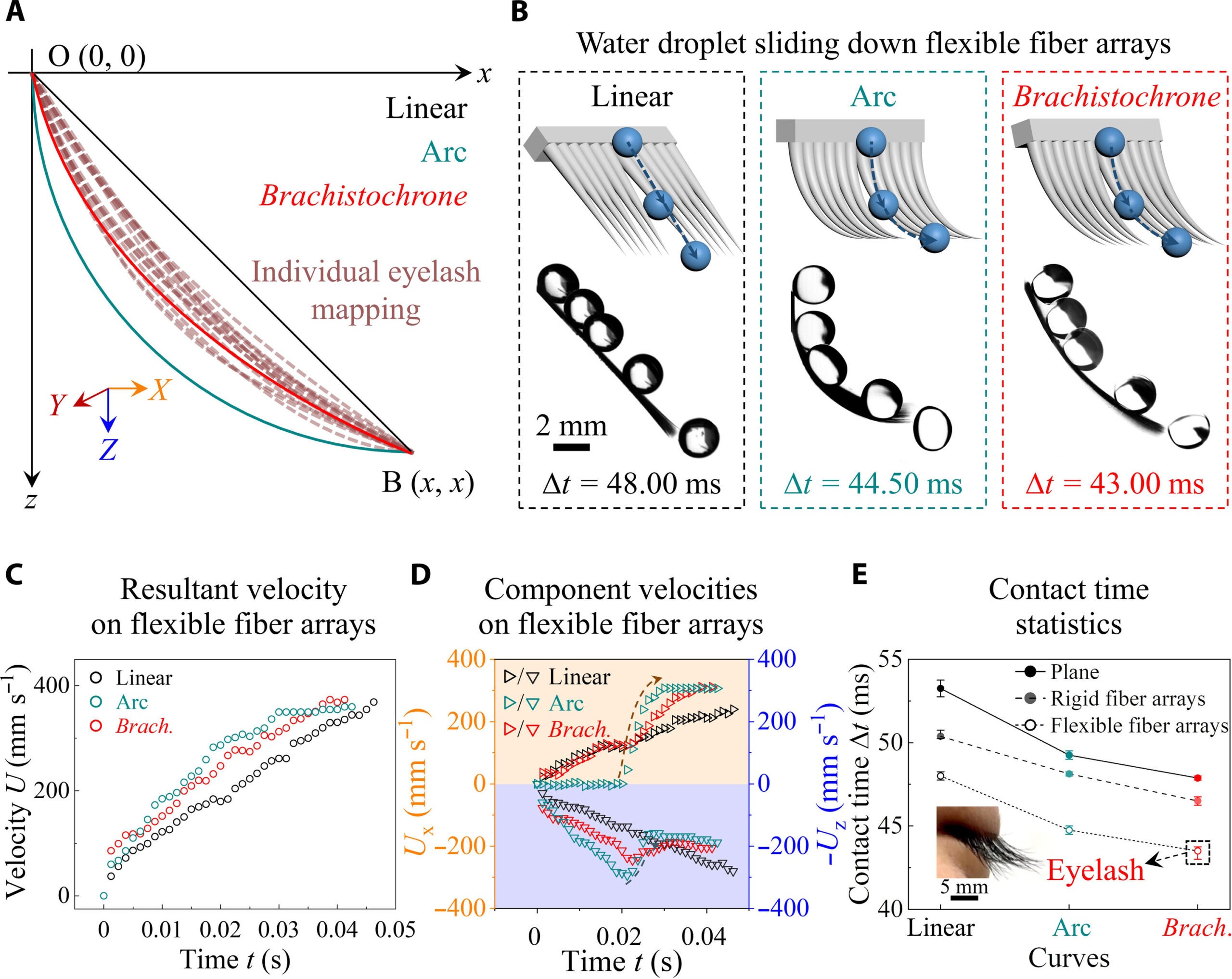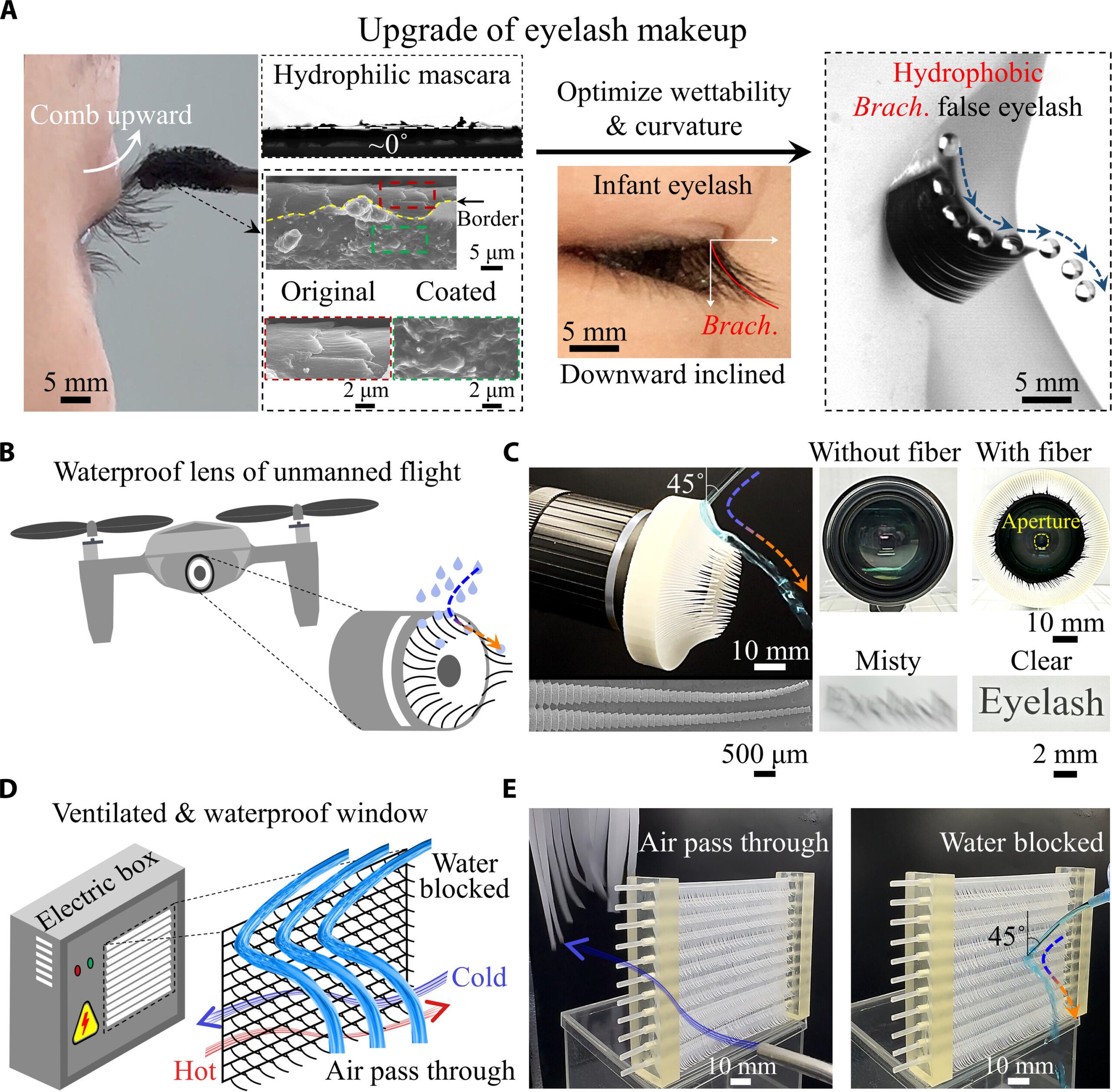Human eyelashes may seem small and simple, but their design holds a secret to clear vision—even when soaked with water. Whether you’re caught in a downpour, washing your face, or sweating during exercise, your eyelashes help keep your sight sharp. A recent scientific discovery reveals how the unique structure of eyelashes gives them this impressive ability to quickly shed water and protect your eyes.
For a long time, people believed eyelashes simply blocked dust or filtered air. But scientists now know there’s much more to the story. Researchers at the Chinese Academy of Sciences, led by Professor Jiang Lei, have uncovered that human eyelashes are not just passive barriers—they’re high-functioning liquid-repelling systems.
These fibers are curved, flexible, and coated with water-repelling (hydrophobic) properties. But that’s not all. On a microscopic level, the surface of each eyelash contains tiny structures known as micro-ratchets. These ridges work like miniature one-way tracks, guiding water in a specific direction. Together with the natural curve of each lash, which closely follows a shape called the Brachistochrone curve, they ensure water slides off fast and smoothly.

When water lands on your lashes, it first gets trapped briefly by the micro-ratchets. Then, as the lashes flex and bend, the water is pushed away. Finally, it flows along the curve in the shortest possible time. This design shortens water contact by about 20% compared to flat, rigid surfaces. That speed helps your eyes stay clear without you even noticing.
Over thousands of years, most human body and facial hair has thinned or vanished. Eyelashes, however, have stayed. That fact alone hints at their importance. The study published in Science Advances on December 20 shows that this tiny feature plays a powerful role in daily life.
The research team wanted to understand why eyelashes are so effective at handling water. They measured their shape, flexibility, and how they respond to water in real-time. By combining lab experiments with computer models, they were able to explain exactly how water is moved and pushed away by the lashes.
Related Stories
As Professor Jiang’s team explained, “The eyelashes feature a hydrophobic curved flexible fiber array with surface micro-ratchet and macro-curvature approximating the Brachistochrone.” It’s a mouthful—but all of these elements work together to maintain one goal: vision clarity.
Beyond explaining the science of eyelashes, the team also saw ways to use these natural structures in technology. They’ve designed artificial “eyelash-mimetic” edges that can quickly move liquid, just like real lashes.
These could be used in waterproof camera systems, protective gear, or even better false eyelashes that are not only stylish but also functional. One possible use is in outdoor electronic devices. By adding structures that copy the fiber shape of lashes, these tools could better resist water damage during rain or in wet conditions.

The team also created a computer model to predict how flexible fibers move under pressure from water. This model helps understand how elastic forces and fiber shapes change water movement, allowing for even better designs in the future.
This study sheds light on a small but powerful system in the human body that’s often overlooked. It also points toward new ways to make waterproof designs for tools and devices. The mix of biology, physics, and engineering in this research shows how even the tiniest parts of the human body can inspire big ideas.
So next time water splashes near your eyes and your vision stays sharp, thank your lashes. They’ve been shaped by nature to work with precision, speed, and grace—keeping your world in focus no matter the weather.
Note: The article above provided above by The Brighter Side of News.
Like these kind of feel good stories? Get The Brighter Side of News’ newsletter.
The post Study reveals how eyelashes improve your vision appeared first on The Brighter Side of News.
Leave a comment
You must be logged in to post a comment.